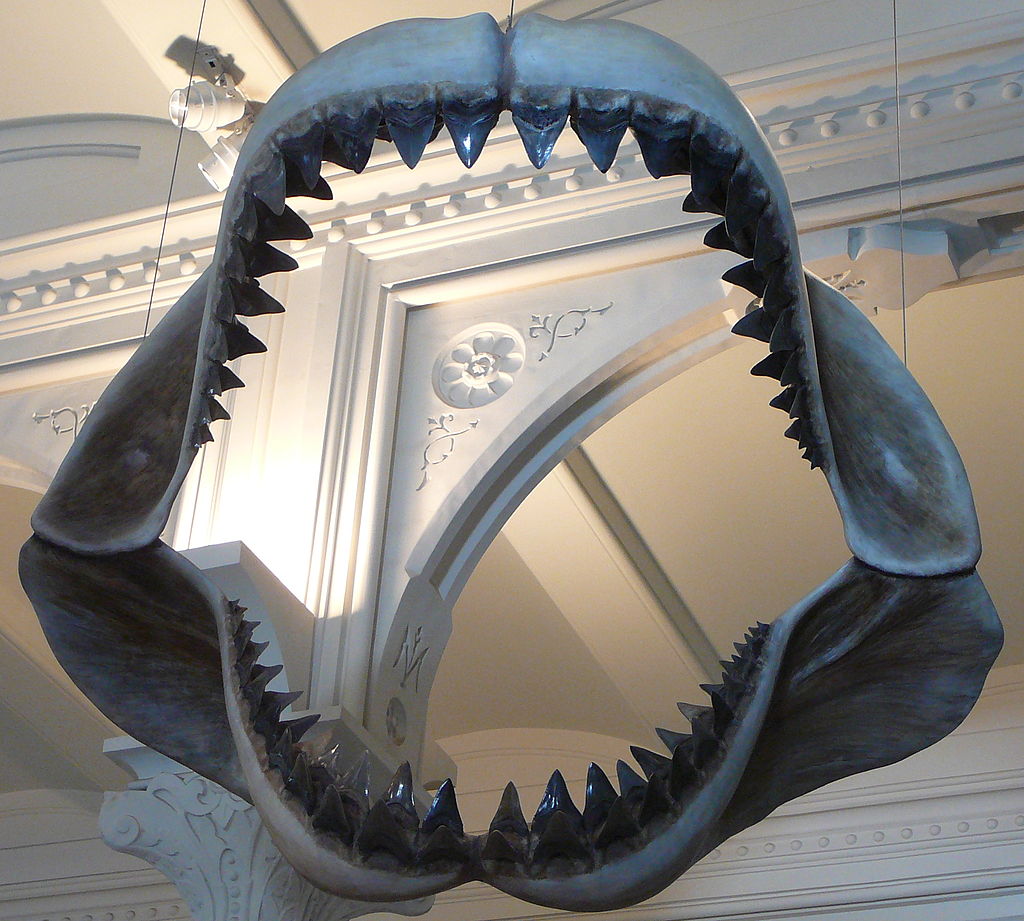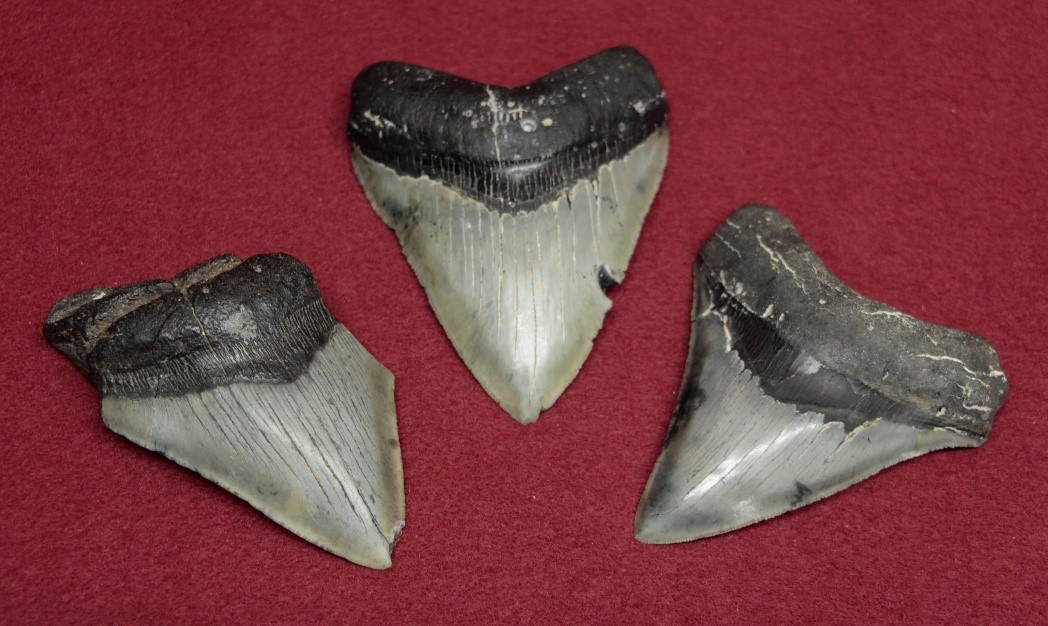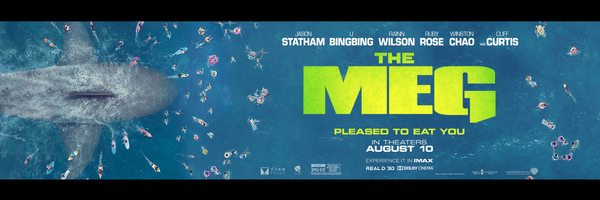The Meg AKA Megalodon is Extinct…But It’s Fun to Pretend it Isn’t
August 8, 2018

People love sharks. Just look at The Discovery Channel’s annual “Shark Week” programming, which this year is celebrating its 30th anniversary. Whether it be educational programs about the ocean’s most fearsome predators or popcorn entertainment like Steven Spielberg’s blockbuster film Jaws, sharks capture our imaginations like few other creatures can.
Which is precisely why shark fans can’t get enough of Megalodon. What is Megalodon, you ask? It’s a prehistoric, extinct species of massive shark that once ruled the seas and made the fearsome Great White look like a mere goldfish. It is believed to be the largest predator to have ever lived and could have grown over 60 feet long and weighed over 60 tons. These sharks sported well over 200 teeth, each which could be up to 7 inches in length. The Museum of World Treasures actually has several fossilized Megalodon teeth in its collection, which were recently on display as part of the “Ivan’s Curious Case” exhibit.

To see a Megalodon in person would have been a terrifying, and likely deadly, experience.
Perhaps it’s for that reason the shark has cemented itself in popular culture. In recent years, books, movies, and faux documentaries (some of which have even aired during Shark Week) have thrown around the idea that, perhaps, deep in the dark depths of the unexplored oceans, Megalodon could still be alive and well. After all, the deepest parts of the oceans, like the Mariana Trench, haven’t been fully explored. New species are discovered in the deep ocean all the time.
Every once in a while a species thought to be extinct is rediscovered. That was the case with the Coelacanth, an order of fish thought to have been extinct for millions of years but discovered to be alive in 1938. This is an example of what is called a Lazarus taxon, an evolutionary line that appeared to have disappeared from the fossil record only to reappear later.
Let’s get this out of the way: Megalodon is extinct and has been for over 2 million years. There aren’t any of these gigantic predators still lurking in the deep ocean. Megalodon was a massive creature that is believed to have primarily fed on large whales. If these sharks somehow escaped extinction, we would know. But just like it’s fun to believe in the idea of Bigfoot or the Loch Ness Monster, the idea of Megalodon still haunting the seas is one that captures people’s imaginations. If these creatures did still exist, how would they survive? How would they interact with the modern world? How many people could they eat?
It looks like all these fun, hypothetical questions and more will be answered in the upcoming summer blockbuster The Meg, in theaters starting August 10. Starring Jason Statham and based on a series of popular books, Statham’s character must race to rescue a team of scientists and the world at large from the hungry mouth of a 70 ft. long Megalodon, aka “The Meg”. Though the chances of The Meg being scientifically accurate in any way are slim, it should make for an entertaining summer trip to the movies.
 The Meg and other pieces of pop culture like it will keep the memory of Megalodon alive and well for years to come, even if the creature itself is long extinct. To learn more about the types of creatures that prowled the seas millions of years ago, be sure to check out the “Sea Creatures of the Plains” exhibit at The Museum of World Treasures, starring Logan the Tylosaurus.
The Meg and other pieces of pop culture like it will keep the memory of Megalodon alive and well for years to come, even if the creature itself is long extinct. To learn more about the types of creatures that prowled the seas millions of years ago, be sure to check out the “Sea Creatures of the Plains” exhibit at The Museum of World Treasures, starring Logan the Tylosaurus.